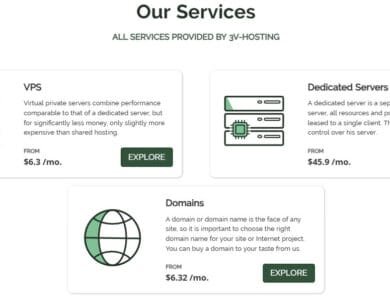How to Take Control of Your Financial Future After 35
As we move through life, the urgency of securing financial stability becomes more pressing, especially after the age of 35. By this point, most people have significant responsibilities, from family obligations to mortgage payments, and the need to plan strategically for retirement.
In this guide, we will explore how you can take control of your financial future, evaluate new income streams, and even consider new business opportunities that fit your lifestyle and risk appetite.
Why Financial Planning Becomes More Critical After 35
By age 35 and beyond, many people find themselves at a crossroads. You may have built a steady career, purchased a home, or started a family. However, you might also feel a growing concern about savings, investments, and long-term security.
Key Financial Challenges After 35
Increased family obligations
Greater debt (mortgages, car loans, education)
More expensive lifestyle
Shorter runway to retirement savings
These realities make it essential to start applying financial advice that is tailored to your age and stage in life.
Step 1: Conduct a Financial Self-Assessment
Before making changes, assess your current financial situation. You can do this manually, or use tools like spreadsheets or budgeting apps.
What to Review:
Monthly income vs. expenses
Outstanding debts (credit cards, loans)
Investment accounts (401(k), Roth IRA, stocks)
Emergency savings
This audit gives you a snapshot of where you stand—and a clearer sense of your financial goals.
Step 2: Set Specific Financial Goals
Many adults over 35 find success by setting concrete financial goals. These could include:
Saving for a child’s education
Paying off mortgage early
Building a retirement fund of $1M+
Launching a side hustle or full business
When you define your goals clearly, it becomes easier to allocate resources and track your progress.
Step 3: Explore New Income Streams
Today, the traditional 9-to-5 job isn’t the only option. Many adults in their late 30s, 40s, and beyond are finding new business opportunities that align with their values and skill sets.
Consider These Avenues:
1. Consulting or Freelancing
Use your years of experience in a particular industry to consult or freelance. This offers flexibility and high earning potential.
2. Real Estate Investing
Whether you flip houses or invest in rental properties, real estate remains a solid long-term wealth builder.
3. Online Businesses
From digital courses to eCommerce, the internet offers countless ways to generate income with minimal startup costs.
4. Medical or Dental Tourism
One of the more innovative sectors today is dental tourism. This niche is gaining traction as a new business opportunity that combines healthcare with global travel.
Step 4: Master Debt Management
If you’re carrying significant debt, it’s time to make a plan to eliminate or restructure it. High-interest debt—like credit cards—can sabotage even the best savings plan.
Tips to Tackle Debt:
Pay more than the minimum balance
Consider a debt snowball or avalanche method
Consolidate if it lowers your interest rate
Avoid accumulating new debt unless it’s strategic (e.g., a mortgage)
Step 5: Protect Your Income and Assets
Insurance may not be exciting, but it’s critical. If you’re supporting a family or planning for the unexpected, proper insurance coverage is a must.
Consider:
Life insurance
Health insurance
Disability insurance
Umbrella liability policies
These measures help protect the wealth you’re building and offer peace of mind.
Step 6: Invest for the Long Term
Investment becomes increasingly important after 35. You have less time to recover from market losses and more need for a balanced, growth-oriented portfolio.
Key Investment Options:
Retirement accounts (401(k), IRA)
Index funds and ETFs
Real estate
Dividend-paying stocks
REITs (Real Estate Investment Trusts)
Don’t forget to review and rebalance your portfolio at least annually.
Step 7: Plan for Retirement
The ideal time to start retirement planning was yesterday. The next best time? Today. The longer your money is invested, the more it benefits from compound growth.
Target Benchmarks:
By age 40: 3x your annual salary saved
By age 50: 6x–7x
By age 60: 8x–10x
If you’re behind, don’t panic—adjust your spending, increase your savings rate, and look for passive income streams.
Step 8: Consider Starting a Business
For many adults over 35, entrepreneurship isn’t just a dream—it’s a practical way to take control of one’s financial life. You might be wondering how to own a business, especially if you’re more introverted or unsure about the risks.
Why Start Now?
You have life experience and maturity
You understand risk better than you did in your 20s
You can tap into professional networks
You likely have better credit and access to capital
From solopreneur ventures to franchising, the possibilities are broad. Find something you’re passionate about and take small, strategic steps.
Step 9: Build a Financial Safety Net
Even with solid income and investments, emergencies can strike. That’s why a well-funded emergency fund (3–6 months of living expenses) is crucial.
This fund acts as a buffer and keeps you from dipping into retirement accounts or racking up credit card debt.
Step 10: Stay Educated and Informed
The financial landscape is always evolving. Stay updated through:
Podcasts and financial blogs
Books by trusted financial experts
Courses or certifications
Speaking with a financial planner
Consistent learning keeps you ahead and helps you make smart, timely decisions.
Conclusion: Your Financial Future Starts Now
Taking control of your financial life after 35 is not only possible—it’s powerful. With the right mindset, goals, and resources, you can build lasting wealth, explore new business opportunities, and even learn how to own a business that suits your personality and lifestyle.
By following proven financial advice and staying proactive, you’ll not only gain peace of mind—but also create the freedom to live life on your own terms.




